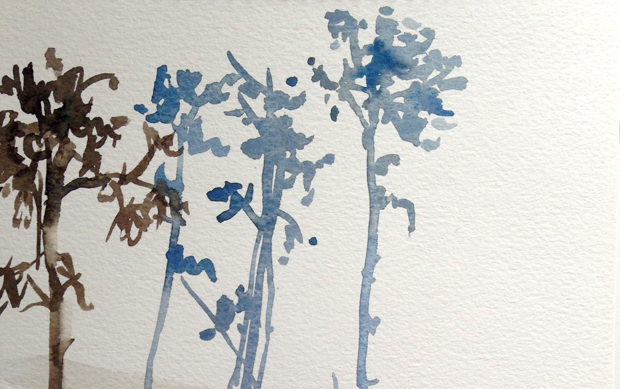I’ve been reading Michelle Alexander’s book, The New Jim Crow: Mass Incarceration in the Age of Colorblindness. It’s a perfect illustration of the threshold between stories. The old stories—of law and order, of command and control, of rich versus poor, of white versus black—are exposed through vivid facts, stories, and history as unfair and inadequate, manipulative and destructive.
Everyone has the power to conjure the stories that we so desperately need now, particularly when it comes to the gulf between people of means and those in poverty, white privilege and the oppression of people of color. Alternative stories are recognizable for their humanity, their appeal to empathy, connection, and belonging.
In “Straight Outta Compton,” Dr. Dre, Ice Cube, Eazy E and their friends are taking a break outside the record studio in Torrance, where they are producing their second album. The police roll up and get to work harassing and humiliating them in a practiced way, assuming they are gang bangers and dope slingers. The musicians’ protests are met not with respect or the benefit of the doubt, but with threats of further harm. It’s a clear dramatization of the power-over dynamic enabled by the war on drugs. The militarized tactics of police rely on the logic of old stories.
These guys are musicians. Their response to such treatment is to pour their emotion into their art. They go back into the studio and let their rage boil over into what would become one of their biggest hits.
Unfortunately, declaring war on the old, false, damaging stories, sweeping them away by force—no matter how tempting—will only keep us stuck in the same alienation and conflict mindset of the old story. Instead of declaring war on racism, or war on white supremacy, or war on the war on drugs, we can take a wider view.
One of the most hopeful moments in Baltimore’s uprising last April was the wall of people—pastors and mothers, fathers and brothers—who placed themselves between the riot-gear-clad police and the angry, ominous knots of friends and strangers. This is the power of love to alchemize both fear and anger. It was an act of great courage and compassion—for both the fearful police and the angry protestors.
New stories emerge from a methodical interrogation of old stories. We discover that hierarchies are fiction, invented for people in power to control those they have labeled as inferior. We find the war mentality unleashed on all manner of problems, including health. We “fight” cancer, for example, with surgery, chemo and radiation, which are sometimes effective. But sometimes the patient suffers and dies horribly from the treatment itself.
Starting instead with the premise that the body has great capacity to heal itself yields a different course of treatment that supports the healthy parts of the whole rather than waging war on the ailing parts.
The wider we draw the circle around an illness or problem, the better chance we have at restoring health and balance. Focusing only on someone’s liver to cure a cancer may have limited results. Taking a wider view to the healthy resources of their entire body or their environment—the water they drink, the air they breathe, the food they eat, the chemical plant where they work—yields further information and resources that could help to restore balance and health.
Similarly, racism and the devastation of the war on drugs in communities of color are not problems only of those communities, nor can they be solved by a narrow focus on the people and places directly affected. The illness is systemic. It has infected our laws, our policing, our justice system, and our choices at all levels. It’s why we treat drug use as a criminal problem instead of a public health issue. And why we build prisons instead of housing.
Rage and fear are both natural responses to oppression. Beneath them is a more tender emotion: grief. Grief for the broken promises of a self-deceived national identity. For deliberate policies and accidental ignorance. For the assumptions and accusations that keep us apart. For the lives, young and old, taken too soon. For the children traumatized by violence, and for their parents, who live in constant fear of further loss.
Looking still deeper, beneath grief, we find love. We are biologically programmed for all emotions. Love and grief unite; fear and anger divide.
Both anger and fear have a similar effect on our brain chemistry. Hormones flood the most evolved part of our brain, shutting down our ability to reason and feel compassion, or to broaden our field of vision and think creatively. When at the mercy of the primitive brain, whose sole job is personal survival, we do not sense our connection to other people. We see only separation and isolation. We feel alone and vulnerable. This is a hallmark of old stories.
Fear and anger are potent forces. Sociopaths and politicians have made use of this in insidiously creative ways over the years. Fear and anger can both be harnessed to turn masses of people against one another and increase the power of leaders and the privileged. If fear engenders flight, anger and rage typically compel us to fight, to lash out in violence. As long as people are afraid and violent towards one another, they are unable to see or address the bigger picture. A sick status quo is maintained.
We are likely to be on this threshold between old and new stories for a while, experiencing the confusion of swinging between mindsets that divide and those that unite. The wider our view, the more resources we can tap. The healthy parts of the system—people, jobs, creativity, compassion, education, ideas, optimism and more—can help to heal and restore balance to the ailing, damaged, under-siege parts. The narrowing, simplifying effects of fear and anger can be alchemized by the tender universal experience of grief and the connecting power of love.

